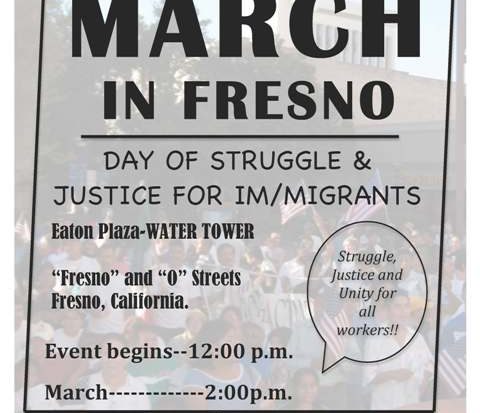
The May Day Committee as part of the movement for immigrants’ rights is conscious that comprehensive immigration reform at the federal level eludes us at this time. However, there are several bills at the state level that we consider important and should be passed by the legislature and signed by Governor Jerry Brown. Those bills include the California DREAM Act, the elimination of the Secure Communities program and the issuance of driver’s licenses to all residents, all of which directly affect our people, regardless of status.
What Is the California DREAM Act?
In March, the State Assembly Committee on Higher Education passed AB 130 and AB 131, which were authored by Assembly Member Gilbert Cedillo (D–Los Angeles). If enacted into law, the two bills would expand institutional and state financial aid to undocumented students in California. Statewide, undocumented students could receive up to $4 million in financial aid. An additional amount up to $3 million would be available for students who are legal residents. Arguments in support include the fact that the state has already invested in their K-12 education; the return comes when today’s immigrant students contribute as productive taxpaying workers. And they certainly will, as data shows. The Assembly Appropriations Committee will meet on the bill in May. More than two-thirds of Californians favor the idea of a true “DREAM Act,” one that would allow undocumented persons who came as children to attain legal resident status.
What Is Secure Communities and AB 1081?
The Secure Communities program uses a database to allow local police to check detainees’ legal status. When there is a match, the police access the individual’s entire immigration file including flags that require an Immigration and Naturalization Service (INS) hold. Thousands of non-criminal, working immigrants, many with families, are taken in and deported under this system. AB 1081, which was sponsored by Assembly Member Tom Ammiano (D–San Francisco), would temporarily remove all California counties from the federal immigration effort until they can separately pass new resolutions to rejoin Secure Communities. These revised agreements would have to protect illegal immigrants who are domestic violence victims and protect against racial profiling.
Why Driver’s Licenses: Why Not?
There are many residents living in large swaths of the Central Valley who are economically active and cannot rely on public transportation, especially as concerns a family’s needs. And it is difficult to explain the logic behind denying an agency such as the DMV or state and local safety and health agencies the capacity to engage with all California residents. The state driver’s license or California ID provides one major tool for doing so. It also facilitates public and private services such as banking and insurance. It provides no assumed or expressed legal status; it does provide certain data and characteristics that can be useful in a society where more information is better.
The movement of immigrants for justice through a legal path has experienced more disillusion than advances from the current U.S. Congress. This year’s efforts are turning to local, Valley and state-level efforts to win important gains that can benefit the whole community. These bills represent a few initiatives. The undocumented refugees from globalization and their supporters continue to march each year as one, heads raised and united in seeking justice.
